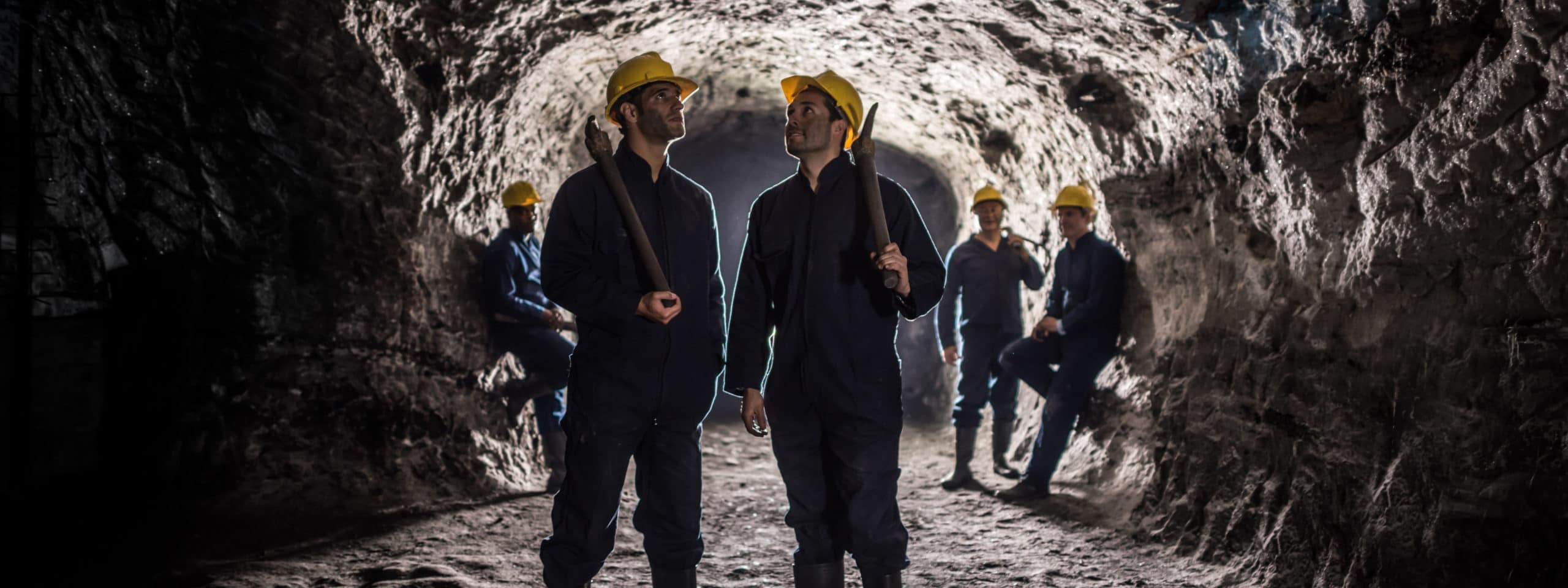A coal worker approaches you with loss of breath, tiredness, or weight loss. While these symptoms cover a wide spectrum of possible health problems, you think it’s worth sending them to primary care for specialty evaluation.
After an x-ray shows large nodules in the worker’s lungs, it’s possible they have developed black lung disease. Â
Coal workers’ pneumoconiosis, or black lung disease, progresses slowly over time and develops when worker’s lungs react to dust particles that the body cannot destroy. The lungs are in a chronic state of inflammation and develop abnormal growths, causing difficulty of breathing, and the inability to do normal daily tasks as well as before.
There is no curable treatment for black lung disease, which is why preventable steps are important. While difficult to recognize and treat, safety steps can help prevent black lung disease.
WHY PREVENTION MATTERS
The life of a miner who contracts a severe version of black lung disease can change dramatically. Because exercise is difficult and miners should avoid future exposure to dust, a miner with black lung disease can no longer work to the same level they used to. Miners are also at risk for impairment, disability, and premature death.
According to the American Lung Association, living with black lung disease means monitoring for worsening lung function, frequent appointments with your health care provider, and watching for other diseases that could develop in the lung, including possibly lung cancer. Some may experience shortness of breath to the point where they have to pause when walking.
Since the disease is not curable, miners must deal with the disease for the rest of their lives. If the disease has progressed to the point where they need a lung transplant, the procedure is a long process and taxing on the body, also preventing the miner from ever working in a mine again.
WHAT ARE THE SYMPTOMS?
Black lung disease affects everyone differently, which means there are a wide range of symptoms to look out for, according to our Assistant Medical Director Dr. Richard Misiaszek. Typically, a miner will approach a medical provider because they are experiencing the symptoms below:
- Shortness of breath
- Getting tired abnormally
- Losing weight
- Unable to complete tasks as easily as they used to
The miner’s age, their work environment, and their symptoms, can determine if they need additional follow-up to check for black lung disease.
Black lung disease also progresses slowly over time—it can take up to ten years before a miner displays symptoms. This makes it a challenge for providers to diagnose the disease, making safety protection even more important to help prevent the disease in the first place.
WHAT REGULATIONS SHOULD MINES FOLLOW?
After an underground explosion killed 78 coal miners in Farmington, West Virginia, in 1968, the federal government enacted the Federal Coal Mine Health & Safety Act (Coal Act) in 1969.
The coal act requires four annual inspections for all underground coal mines and two annual inspections for all surface coal mines, along with other regulations. The Mine Safety and Health Administration conducts these inspections to assess compliance. If coal dust levels are too high, miners can move to different mine locations with less exposure.
WHAT CAN PREVENT BLACK LUNG DISEASE?
Adequate ventilation and appropriate masks can ensure miners are reducing their exposure to coal dust. Having dust sampling procedures in the mines can also help identify where the coal dust levels are high, and can reduce workers’ exposure to harmful dust.
Ventilation
Using the proper ventilation can help reduce contaminants in the air, keeping the atmosphere safe for miners. The velometer is an instrument that district offices use to measure the airflow in a precise point in the mines. It can spot-check the velocity and make sure the correct air flow travels through the mines for the workers. Â
Respirators
Employers must provide respirators to help prevent miners from breathing in too must dust. A particulate filter or airline supplied air respirators are examples that help protect against crystalline silica, which causes black lung disease.
Health Monitoring
While it’s best to reduce exposure to coal dust for all miners, studies show that even after removing a worker from occupational exposure, it doesn’t always stop the disease from progressing.
Health surveillance systems offer periodic chest radiographs for miners. These chest radiographs can spot deposits in the lungs that have large legions. The deposits could signify other illnesses, similar to bronchitis or tuberculosis, so it’s best to schedule additional tests to clarify what is in the lungs.
NIOSH is currently looking into better engineering controls to reduce the emission of coal dust for miners, while also conducting research to identify sources of elevated respirable dust and diesel exposure.
THE BENEFIT OF ON-SITE HEALTH CARE FOR COAL MINES
On-site medical providers can monitor the daily health of your coworkers. Since mining project locations are often distant from hospitals, having medical personnel operating on-site means your workers don’t have to travel for treatment.
While on-site providers do not have the equipment to diagnose black lung disease, they can send a worker experiencing significant symptoms, or who is having trouble working, for a follow-up appointment with a primary care physician.
By monitoring your workers, you can help their health and lifestyle, allowing them to work and live longer.


